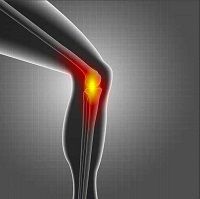Knee Pain: Could Interventions Be the Alternative to Total Knee Replacement?
With the US population growing older and heavier, chronic knee pain is becoming common, and total knee replacement surgery is on the rise. Some 40% of women age 60 to 70 and 25% of men that age have such pain, and many turn to total knee replacement surgery. New studies suggest denervation of the nerves responsible for knee pain could be an alternative.

With the US population growing older and heavier, chronic knee pain is becoming common, and total knee replacement surgery is on the rise. Some 40% of women age 60 to 70 and 25% of men that age have such pain, and many turn to total knee replacement surgery.
“It’s a $5 billion a year industry,” said Ramsin Benyami, MD, a specialist in interventional pain management at the Millennium Pain Center in Bloomington, IL, addressing his fellow members at the annual American Society of Interventional Pain Physicians meeting in Orlando, FL April 9.
Many physicians try less drastic therapies, like steroid injections, prescribing NSAIDs, or hyaluronic acid injections. They rarely provide enough relief.
“None of them work,” Benyami said.
But there are some promising studies in the interventional pain management field that show that ablating the nerves that cause knee pain could give patients the relief they need without surgery.
Those include radiofrequency ablation (RFA), and a newer technology called cooled RFA. The studies, many done abroad, appear to show that denervation results in significant pain relief.
The research into these treatments is still in early stages, and practitioners differ on which nerves to block or ablate. They still aren’t sure of the best targets, Benyami said.
Insurers are generally not eager to reimburse for the procedures, though they are far cheaper than knee replacement surgery.
The problem for the practitioner is that these nerves are not always easy to see or reach with the instruments used to make lesions to impede their ability to transmit pain.
Using larger instruments, for longer times, and with more firepower can be effective, but such usage also increases the risk of causing collateral bone or tissue damage.
“I believe bigger is better, at least in the ex vivo studies we have,” Benyami said.
More studies are needed, but the approach holds great promise, he said, particularly for patients who are not good candidates for surgery. It could also work for obese patients who tell physicians they cannot exercise an lose weight because their knees hurt too much.